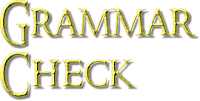Acids, Bases and Salts
 |
| credits:clker.com |
Q1: The most commonly used indicator in laboratory is
(a) Methyl Orange
(b) Litmus
(c) Phenolphtalein
(d) Universal Indicator
Answer: Universal Indicator
Q2: Olfactory indicators are:
(a) Clove
(b) Turmeric
(c) Soap
(d) Rose Petals
Answer: (a) Clove








